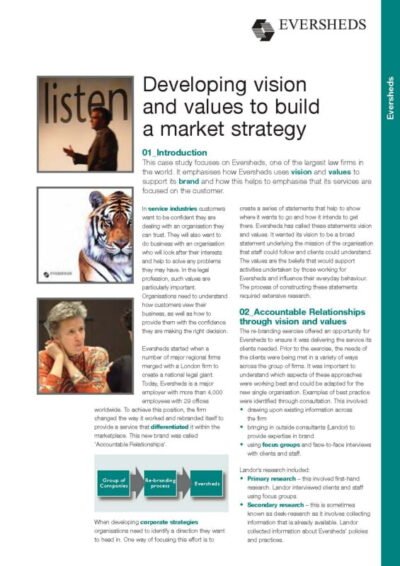In an era characterised by rapid change and uncertainty, the concept of resilience has emerged as a critical attribute for effective leadership. The Leadership Resilience Index (LRI) serves as a vital tool for assessing and enhancing the resilience of leaders within organisations. This index is designed to quantify the ability of leaders to navigate challenges, adapt to shifting circumstances, and maintain their effectiveness in the face of adversity.
By providing a structured framework for evaluating resilience, the LRI enables organisations to identify strengths and areas for improvement among their leadership teams. The LRI is not merely a theoretical construct; it is grounded in empirical research and practical application. It encompasses various dimensions of resilience, including emotional intelligence, adaptability, and stress management.
As organisations increasingly recognise the importance of resilient leadership in fostering a positive organisational culture and achieving strategic objectives, the LRI has gained prominence as a benchmark for assessing leadership capabilities. This article delves into the components of the LRI, its significance in measuring leadership resilience, and its potential benefits for organisations seeking to cultivate resilient leaders.
Summary
- The Leadership Resilience Index is a tool used to measure the resilience of leaders within an organisation, helping to identify strengths and areas for development.
- Components of the Leadership Resilience Index include emotional intelligence, adaptability, problem-solving skills, and stress management.
- Measuring leadership resilience is important as it can help organisations identify potential leaders, improve leadership development programmes, and enhance overall organisational resilience.
- The Leadership Resilience Index can benefit organisations by improving decision-making, reducing employee turnover, and creating a more positive work environment.
- Implementing the Leadership Resilience Index in your organisation involves assessing current leadership resilience, providing targeted training and development, and regularly measuring progress to drive continuous improvement.
Understanding the components of the Leadership Resilience Index
The Leadership Resilience Index comprises several key components that collectively contribute to a leader’s overall resilience. One of the primary dimensions is emotional intelligence, which encompasses self-awareness, self-regulation, motivation, empathy, and social skills. Leaders with high emotional intelligence are better equipped to manage their own emotions and understand the emotional states of others, enabling them to respond effectively to challenging situations.
This ability fosters trust and collaboration within teams, which is essential for maintaining morale during turbulent times. Another critical component of the LRI is adaptability. In a world where change is constant, leaders must be able to pivot quickly in response to new information or shifting circumstances.
This adaptability involves not only a willingness to embrace change but also the capacity to inspire others to do the same. Leaders who demonstrate adaptability are often seen as more innovative and open-minded, qualities that are invaluable in today’s dynamic business environment. Furthermore, stress management plays a significant role in resilience; leaders who can effectively manage stress are more likely to maintain clarity of thought and make sound decisions under pressure.
Importance of measuring leadership resilience

Measuring leadership resilience is essential for several reasons. Firstly, it provides organisations with insights into the strengths and weaknesses of their leadership teams. By identifying areas where leaders excel or struggle, organisations can tailor development programmes to enhance resilience skills.
This targeted approach not only improves individual leaders but also strengthens the overall leadership capacity of the organisation. Moreover, measuring resilience can have a profound impact on organisational culture. When leaders are equipped with the tools to manage stress and adapt to change, they are more likely to foster a positive work environment.
This, in turn, can lead to increased employee engagement and retention. Research has shown that resilient leaders contribute to higher levels of job satisfaction among their teams, as they create an atmosphere of support and understanding. Consequently, measuring leadership resilience is not just about individual performance; it is about cultivating a thriving organisational culture that can withstand challenges.
How the Leadership Resilience Index can benefit organisations
The benefits of implementing the Leadership Resilience Index within an organisation are manifold. One significant advantage is enhanced decision-making capabilities among leaders. Resilient leaders are more adept at analysing complex situations and making informed choices, even under pressure.
This improved decision-making can lead to better outcomes for the organisation as a whole, particularly during times of crisis when swift and effective action is paramount. Additionally, the LRI can serve as a catalyst for leadership development initiatives. By providing a clear framework for assessing resilience, organisations can design targeted training programmes that address specific areas of need.
For instance, if an assessment reveals that a leader struggles with stress management, tailored workshops or coaching sessions can be implemented to develop those skills. This proactive approach not only enhances individual leader performance but also contributes to a more resilient organisational structure overall.
Implementing the Leadership Resilience Index in your organisation
Implementing the Leadership Resilience Index requires a strategic approach that involves several key steps. The first step is to establish a clear understanding of what resilience means within the context of your organisation. This involves engaging stakeholders at all levels to define resilience-related competencies that align with organisational values and goals.
Once these competencies are established, organisations can develop assessment tools that measure these dimensions effectively. Following the assessment phase, it is crucial to provide feedback to leaders based on their LRI scores. This feedback should be constructive and aimed at fostering growth rather than merely highlighting deficiencies.
Leaders should be encouraged to set personal development goals based on their assessment results, creating a roadmap for enhancing their resilience skills. Furthermore, organisations should consider integrating resilience training into existing leadership development programmes to ensure that leaders have ongoing opportunities to build their capabilities.
Case studies of successful use of the Leadership Resilience Index

Several organisations have successfully implemented the Leadership Resilience Index, yielding impressive results in terms of leadership effectiveness and organisational performance. For instance, a multinational technology company adopted the LRI as part of its leadership development strategy during a period of significant organisational change. By assessing their leaders’ resilience levels, they identified key areas for improvement, particularly in emotional intelligence and adaptability.
As a result of this assessment, the company launched a series of workshops focused on developing these competencies among its leadership team. Over time, they observed a marked improvement in team cohesion and morale, as leaders became more adept at managing stress and fostering open communication during challenging times. The positive impact on employee engagement was evident in subsequent surveys, which showed increased job satisfaction and commitment among staff.
Another example can be found in a healthcare organisation that faced unprecedented challenges during the COVID-19 pandemic. By utilising the LRI to assess their leaders’ resilience capabilities, they were able to identify those who excelled in crisis management and those who required additional support. The organisation implemented targeted training programmes aimed at enhancing stress management techniques and fostering adaptability among its leaders.
This proactive approach not only improved leadership effectiveness during the crisis but also laid the groundwork for long-term resilience within the organisation.
Challenges and limitations of the Leadership Resilience Index
Despite its many advantages, the Leadership Resilience Index is not without its challenges and limitations. One significant concern is the potential for misinterpretation of assessment results. If not communicated effectively, LRI scores may lead to misconceptions about a leader’s capabilities or potential for growth.
It is essential for organisations to provide context around these scores and emphasise that resilience is not a fixed trait but rather a skill that can be developed over time. Additionally, there may be resistance from leaders who perceive resilience assessments as intrusive or unnecessary. To mitigate this resistance, organisations must foster a culture that values continuous learning and development.
Leaders should be encouraged to view assessments as opportunities for growth rather than evaluations of their worth or competence. Furthermore, it is crucial to ensure that assessments are conducted fairly and consistently across all levels of leadership to maintain credibility and trust in the process.
Conclusion and future developments of the Leadership Resilience Index
As organisations continue to navigate an increasingly complex landscape, the importance of resilient leadership will only grow. The Leadership Resilience Index offers a valuable framework for assessing and developing this critical attribute among leaders. Looking ahead, there is potential for further refinement of the LRI through advancements in psychological research and data analytics.
Future developments may include integrating technology-driven solutions such as artificial intelligence to enhance assessment accuracy and provide real-time feedback on leadership resilience. Additionally, expanding the index to encompass broader organisational factors—such as team dynamics and organisational culture—could provide a more holistic view of resilience within an organisation. Ultimately, as organisations strive for excellence in leadership development, embracing tools like the Leadership Resilience Index will be essential in cultivating leaders who can thrive amidst uncertainty and drive their organisations toward success.
The Leadership Resilience Index is a crucial tool for assessing and improving leadership capabilities in times of crisis. In a related article on how to study and travel, the importance of maintaining resilience and adaptability while juggling multiple responsibilities is highlighted. Just as leaders need to be resilient in the face of challenges, students and travellers must also find a perfect balance to succeed in their endeavours. This article provides valuable insights on how to navigate the complexities of studying and travelling effectively.
FAQs
What is the Leadership Resilience Index?
The Leadership Resilience Index is a tool used to measure and assess the resilience of leaders within an organization. It provides a framework for understanding and evaluating a leader’s ability to navigate and thrive in challenging and uncertain situations.
How is the Leadership Resilience Index measured?
The Leadership Resilience Index is measured through a series of assessments and evaluations that gauge a leader’s ability to adapt to change, manage stress, and maintain a positive outlook in the face of adversity. It takes into account factors such as emotional intelligence, problem-solving skills, and the ability to inspire and motivate others.
Why is the Leadership Resilience Index important?
The Leadership Resilience Index is important because it helps organizations identify and develop resilient leaders who can effectively lead their teams through times of change and uncertainty. Resilient leaders are better equipped to handle challenges, make tough decisions, and maintain a sense of purpose and direction for their teams.
How can the Leadership Resilience Index benefit an organization?
The Leadership Resilience Index can benefit an organization by helping to identify potential leaders who possess the resilience and adaptability needed to navigate complex and unpredictable business environments. It can also be used to develop training and development programs to enhance leadership resilience across the organization.
Who can use the Leadership Resilience Index?
The Leadership Resilience Index can be used by organizations of all sizes and across various industries to assess and develop the resilience of their leaders. It can also be used by leadership development professionals, coaches, and consultants to support leaders in building their resilience capabilities.
 Syngenta A3 ePoster Edition 14 "Developing an effective organisational structure"
Syngenta A3 ePoster Edition 14 "Developing an effective organisational structure"  Creating world class performance in a Jaguar assembly plant (PDF)
Creating world class performance in a Jaguar assembly plant (PDF)  Developing vision and values to build a market strategy (PDF)
Developing vision and values to build a market strategy (PDF) 